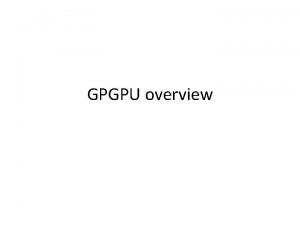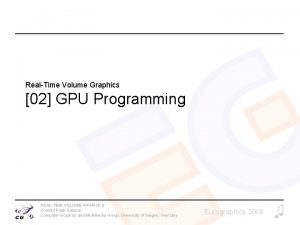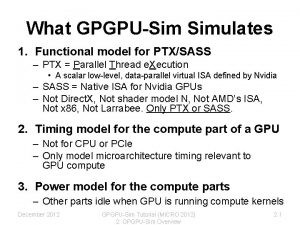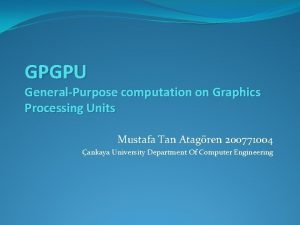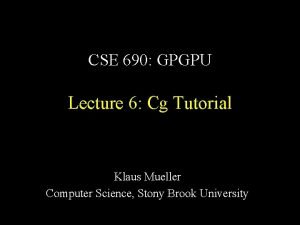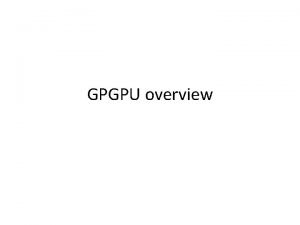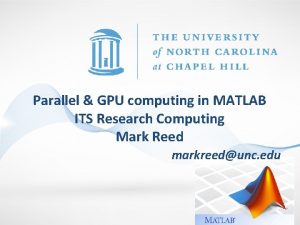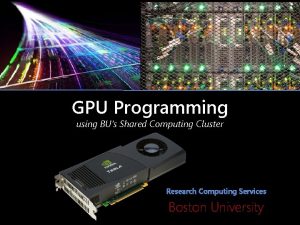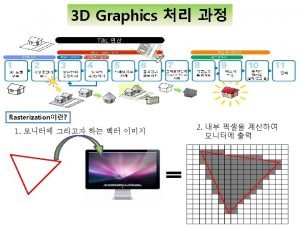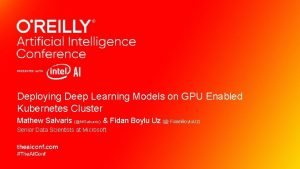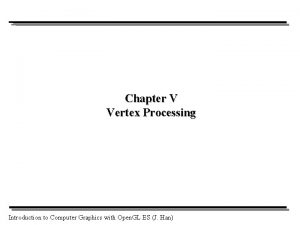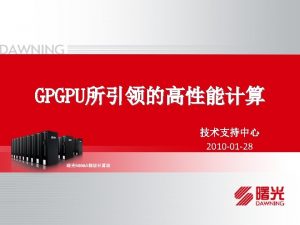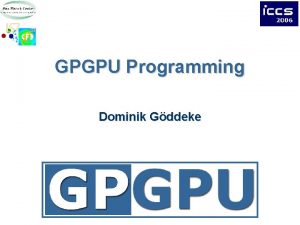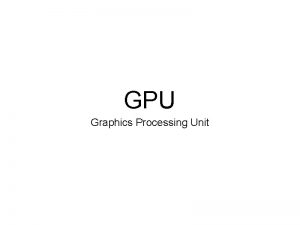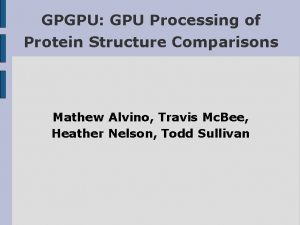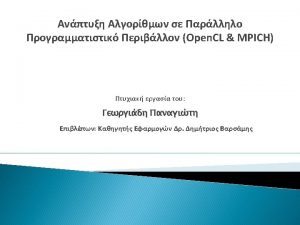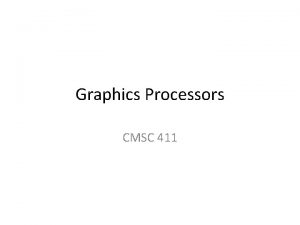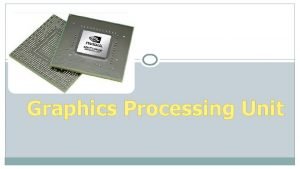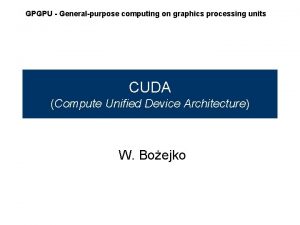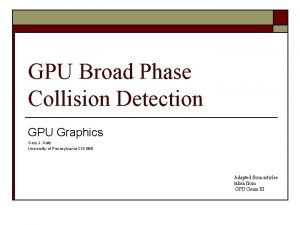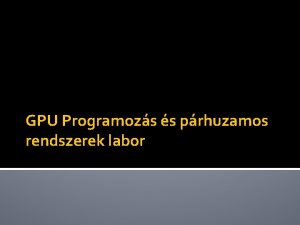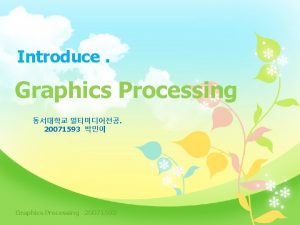GPGPU overview Graphics Processing Unit GPU GPU is















- Slides: 15

GPGPU overview

Graphics Processing Unit (GPU) • GPU is the chip in computer video cards, PS 3, Xbox, etc – Designed to realize the 3 D graphics pipeline • Application Geometry Rasterizer image • GPU development: – Fixed graphics hardware – Programmable vertex/pixel shaders – GPGPU • general purpose computation (beyond graphics) using GPU in applications other than 3 D graphics • GPGPU can be treated as a co-processor for compute intensive tasks – With sufficient large bandwidth between CPU and GPU.

CPU and GPU • GPU is specialized for compute intensive, highly data parallel computation – More area is dedicated to processing – Good for high arithmetic intensity programs with a high ratio between arithmetic operations and memory operations. Control ALU ALU Cache DRAM CPU GPU

A powerful CPU or many less powerful CPUs?

Flop rate of CPU and GPU Single Precision Double Precision 1200 GFlop/Sec 1000 Tesla 20 -series Tesla 10 -series 800 600 Tesla 20 -series Tesla 8 -series Westmere 3 GHz 400 Tesla 10 -series 200 Nehalem 3 GHz 0 2003 2004 2005 2006 2007 2008 2009 2010

Compute Unified Device Architecture (CUDA) • Hardware/software architecture for NVIDIA GPU to execute programs with different languages – Main concept: hardware support for hierarchy of threads

Fermi architecture • First generation (GTX 465, GTX 480, Telsa C 2050, etc) has 512 CUDA cores – 16 stream multiprocessor (SM) of 32 processing units (cores) – Each core execute one floating point or integer instruction per clock for a thread

Fermi Streaming Multiprocessor (SM) • 32 CUDA processors with pipelined ALU and FPU – Execute a group of 32 threads called warp. – Support IEEE 754 -2008 (single and double precision floating points) with fused multiply-add (FMA) instruction). – Configurable shared memory and L 1 cache

SIMT and warp scheduler • SIMT: Single instruction, multi-thread – Threads in groups (or 16, 32) that are scheduled together call warp. – All threads in a warp start at the same PC, but free to branch and execute independently. – A warp executes one common instruction at a time • To execute different instructions at different threads, the instructions are executed serially – To get efficiency, we want all instructions in a warp to be the same. – SIMT is basically SIMD without programmers knowing it.

Warp scheduler • 2 per SM: representing a compromise between cost and complexity

NVIDIA GPUs (toward general purpose computing) Control ALU ALU Cache DRAM

Typical CPU-GPU system Main connection from GPU to CPU/memory is the PCI-Express (PCIe) • PCIe 1. 1 supports up to 8 GB/s (common systems support 4 GB/s) • PCIe 2. 0 supports up to 16 GB/s

Bandwidth in a CPU-GPU system

GPU as a co-processor • CPU gives compute intensive jobs to GPU • CPU stays busy with the control of execution • Main bottleneck: – The connection between main memory and GPU memory • Data must be copied for the GPU to work on and the results must come back from GPU • PCIe is reasonably fast, but is often still the bottleneck.

GPGPU constraints • Dealing with programming models for GPU such as CUDA C or Open. CL • Dealing with limited capability and resources – Code is often platform dependent. • Problem of mapping computation on to a hardware that is designed for graphics.
 Nvidia cache
Nvidia cache Graphics processing unit
Graphics processing unit Graphics processing unit
Graphics processing unit Gpgpu sim tutorial
Gpgpu sim tutorial Unicompiler
Unicompiler Gpgpu tutorial
Gpgpu tutorial What is gpgpu
What is gpgpu Matlab parallel computing gpu
Matlab parallel computing gpu Gpgpu matlab
Gpgpu matlab General purpose cpu
General purpose cpu Kubernetes gpgpu
Kubernetes gpgpu Graphics monitors and workstations and input devices
Graphics monitors and workstations and input devices Dot matrix display ppt
Dot matrix display ppt Vertex processing
Vertex processing What is informal email
What is informal email Unit 6 review questions
Unit 6 review questions
